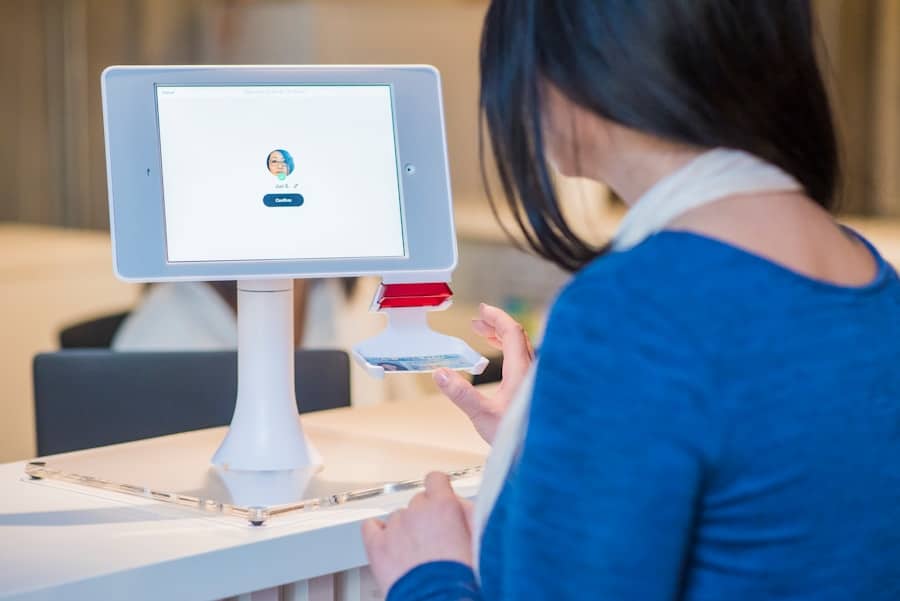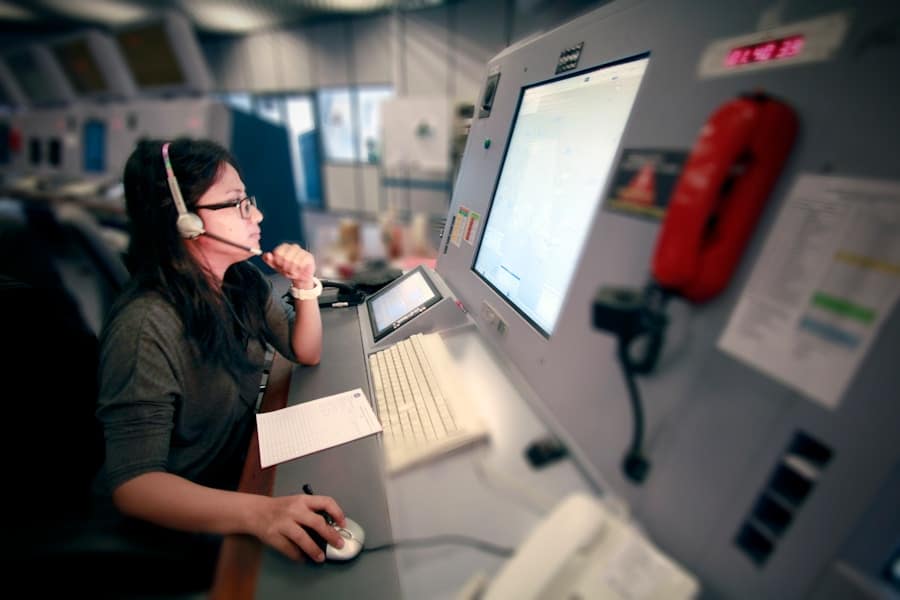The advent of virtual assistants has revolutionized the landscape of office productivity software, transforming how individuals and teams manage their tasks, schedules, and communications.
These digital aides can handle everything from scheduling meetings to managing emails, allowing users to focus on more strategic tasks.
The integration of virtual assistants into office productivity software is not merely a trend; it represents a fundamental shift in how work is conducted. By leveraging natural language processing (NLP) and machine learning algorithms, these assistants can understand user commands, learn from interactions, and provide personalized support.
This capability not only improves user experience but also fosters a more intuitive approach to managing daily responsibilities. As businesses continue to seek ways to optimize their operations, the significance of virtual assistants in enhancing productivity cannot be overstated.
Key Takeaways
- Virtual assistants in office productivity software are becoming increasingly popular as they offer a convenient and efficient way to manage tasks and workflows.
- Current virtual assistants in office productivity software are capable of performing basic tasks such as scheduling meetings, setting reminders, and providing information, but there is still room for improvement in terms of their capabilities.
- Advancements in artificial intelligence and machine learning are driving the development of more sophisticated virtual assistants that can understand natural language, learn from user interactions, and provide personalized recommendations.
- The integration of virtual assistants with office productivity software allows users to access and utilize these tools seamlessly within their existing workflows, leading to increased efficiency and productivity.
- The benefits of virtual assistants for office productivity include time savings, improved task management, and the ability to offload repetitive and mundane tasks, allowing users to focus on more strategic and high-value activities.
Current State of Virtual Assistants in Office Productivity Software
Enhancing Productivity with Virtual Assistants
These virtual assistants are capable of performing a range of tasks, from setting reminders and sending messages to providing real-time information and insights. For example, Microsoft 365 users can leverage Cortana to schedule meetings directly within Outlook or retrieve documents from OneDrive with simple voice commands.
Expanding Functionality with Third-Party Applications
The rise of third-party applications has expanded the functionality of virtual assistants beyond traditional office software. Tools like Slack and Trello have incorporated their own virtual assistants that help users manage projects and communicate more effectively. These integrations allow for seamless collaboration across platforms, enabling teams to stay connected regardless of their physical location.
User-Centric Design: The Future of Virtual Assistants
The current landscape is characterized by an increasing emphasis on user-centric design, where virtual assistants are becoming more intuitive and responsive to individual preferences. As virtual assistants continue to evolve, they are likely to play an even more significant role in enhancing office productivity and collaboration.
Advancements in Artificial Intelligence and Machine Learning

The advancements in artificial intelligence and machine learning have been pivotal in enhancing the capabilities of virtual assistants within office productivity software. Machine learning algorithms enable these assistants to analyze vast amounts of data, recognize patterns, and make predictions based on user behavior. For example, AI-driven tools can suggest optimal meeting times based on participants’ availability or recommend relevant documents based on the context of a conversation.
This level of personalization not only saves time but also improves decision-making processes. Natural language processing has also seen significant improvements, allowing virtual assistants to understand and respond to complex queries with greater accuracy. The ability to comprehend context, tone, and intent has made interactions with these digital aides more fluid and human-like.
For instance, users can now ask their virtual assistants nuanced questions such as “What are my priorities for today?” or “Can you summarize the key points from my last meeting?” The responses generated are increasingly relevant and tailored to the user’s specific needs, showcasing the potential of AI to enhance workplace efficiency.
Integration of Virtual Assistants with Office Productivity Software
The integration of virtual assistants with office productivity software is a critical factor in maximizing their effectiveness. This integration allows for a seamless flow of information between different applications, enabling users to perform tasks without switching contexts. For example, a user can dictate an email while simultaneously accessing their calendar to check availability for a meeting—all facilitated by the virtual assistant’s capabilities.
This interconnectedness not only enhances user experience but also reduces the cognitive load associated with multitasking. Furthermore, APIs (Application Programming Interfaces) play a crucial role in enabling these integrations. By allowing different software applications to communicate with one another, APIs facilitate the sharing of data and functionalities across platforms.
For instance, a project management tool integrated with a virtual assistant can automatically update task statuses based on voice commands or chat interactions. This level of integration fosters a more cohesive work environment where information is readily accessible, ultimately driving productivity.
Benefits of Virtual Assistants for Office Productivity
The benefits of virtual assistants in office productivity are manifold, significantly impacting both individual users and organizations as a whole. One of the most notable advantages is time savings; by automating routine tasks such as scheduling meetings or managing emails, virtual assistants free up valuable time for employees to focus on higher-level responsibilities. This shift not only enhances individual productivity but also contributes to overall organizational efficiency.
Additionally, virtual assistants can improve collaboration among team members by facilitating communication and information sharing. For instance, a virtual assistant integrated into a team messaging platform can help users quickly locate files or documents shared within the group chat. This capability reduces the time spent searching for information and ensures that team members have access to the resources they need when they need them.
Moreover, by providing reminders and follow-ups on tasks or deadlines, virtual assistants help maintain accountability within teams.
Challenges and Limitations of Virtual Assistants in Office Productivity Software

Variable User Adoption Rates
One significant issue is the variability in user adoption rates. While some individuals wholeheartedly embrace these tools, others may be resistant to change or skeptical about their capabilities. This disparity can lead to inconsistent usage within teams or organizations, ultimately limiting the potential benefits that virtual assistants can provide.
Inaccurate and Unreliable Responses
Another challenge lies in the accuracy and reliability of virtual assistants’ responses. While advancements in AI have improved their performance, there are still instances where these tools may misinterpret commands or provide irrelevant information. Such inaccuracies can lead to frustration among users and diminish trust in the technology.
Privacy Concerns and Data Security
Additionally, privacy concerns surrounding data security and user information pose significant challenges. Organizations must ensure that their virtual assistant solutions comply with data protection regulations while safeguarding sensitive information.
Future Trends and Developments in Virtual Assistants for Office Productivity
Looking ahead, several trends are poised to shape the future development of virtual assistants in office productivity software. One notable trend is the increasing emphasis on personalization; as AI continues to evolve, virtual assistants will become even more adept at understanding individual user preferences and tailoring their responses accordingly. This level of customization will enhance user experience and drive greater engagement with these tools.
Moreover, advancements in voice recognition technology will likely lead to more sophisticated interactions between users and virtual assistants. As voice interfaces become more prevalent in office environments, users may find themselves relying on verbal commands more frequently than traditional input methods. This shift could further streamline workflows and promote hands-free operation in busy work settings.
Additionally, the integration of augmented reality (AR) and virtual reality (VR) technologies may open new avenues for virtual assistants in office productivity software. Imagine a scenario where a virtual assistant can overlay relevant information onto physical documents during meetings or provide real-time data visualizations during presentations. Such innovations could redefine how teams collaborate and interact with information in dynamic ways.
The Impact of Virtual Assistants on Office Productivity
The impact of virtual assistants on office productivity is profound and multifaceted. As organizations continue to navigate an increasingly complex work environment characterized by remote collaboration and digital transformation, these tools offer invaluable support in enhancing efficiency and streamlining operations. By automating routine tasks, facilitating communication, and providing personalized assistance, virtual assistants empower employees to focus on strategic initiatives that drive business success.
As technology continues to advance, the capabilities of virtual assistants will only expand further, offering even greater potential for improving workplace productivity. The ongoing integration of AI-driven solutions into office productivity software will likely lead to more intuitive interactions and seamless workflows that redefine how work is accomplished. Ultimately, the evolution of virtual assistants represents not just a technological advancement but a fundamental shift in how we approach productivity in the modern workplace.
In a recent article on best WordPress hosting companies in 2023, Enicomp explores the importance of choosing the right hosting provider for your website. Just as selecting the right software is crucial for productivity, having reliable hosting is essential for maintaining a successful online presence. The article highlights key factors to consider when choosing a hosting company, such as speed, uptime, security, and customer support. By making informed decisions about both software and hosting, businesses can optimize their online operations and enhance overall productivity.
FAQs
What are virtual assistants embedded in office productivity software?
Virtual assistants embedded in office productivity software are AI-powered tools that can perform various tasks to help users with their work. These tasks can include scheduling meetings, setting reminders, providing information, and even performing simple data analysis.
How do virtual assistants in office productivity software work?
Virtual assistants in office productivity software use natural language processing and machine learning algorithms to understand and respond to user commands and queries. They can also integrate with other software and services to perform tasks such as sending emails, creating documents, and managing calendars.
What are the benefits of using virtual assistants in office productivity software?
The use of virtual assistants in office productivity software can help users save time, increase productivity, and reduce the cognitive load of managing multiple tasks. They can also provide personalized recommendations and insights based on user behavior and preferences.
What are some examples of virtual assistants embedded in office productivity software?
Examples of virtual assistants embedded in office productivity software include Microsoft’s Cortana, Google’s Assistant, and Apple’s Siri. These virtual assistants are integrated into their respective office productivity suites, such as Microsoft Office and Google Workspace, to provide users with a seamless experience.
What is the future of virtual assistants embedded in office productivity software?
The future of virtual assistants embedded in office productivity software is likely to involve more advanced AI capabilities, improved natural language understanding, and deeper integration with other software and services. Virtual assistants may also become more proactive in anticipating user needs and providing proactive assistance.

